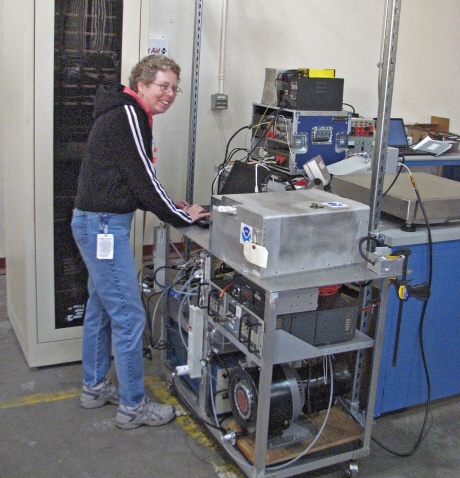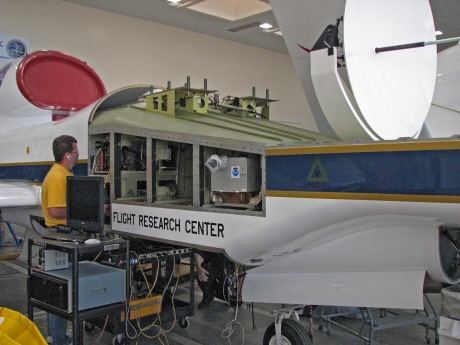From Paul Newman, mission co-project scientist:
We have had some success in bolting our instruments onto the Global Hawk. We just completed installing the NOAA ozone instrument, led by Laurel Watts, one of several National Oceanic and Atmospheric Administration scientists participating in the campaign. (The principle investigator for the instrument is Ru-Shan Gao, but Laurel has been handling the instrument for the past week.)
NOAA is playing a big role in the GloPac mission. My co-project scientist is Dr. David Fahey of NOAA; he was recently featured in The Washington Post. One of our pilots is Commander Phil Hall of the NOAA Corps.
Ozone is a crucial gas in our atmosphere because it absorbs harmful solar ultraviolet radiation. Excessive UV can lead to skin cancer and other health problems. Ozone is also a greenhouse gas, and ozone depletion in the stratosphere actually cools the Earth’s surface.
The ozone instrument works by taking a stream of air from outside the plane and passing it into the body of the instrument. The air flows between a lamp that emits ultraviolet radiation and a UV detector. Because ozone strongly absorbs UV, if there is more ozone in the air, then there is less UV at the detector. If there is less ozone in the air stream, then more UV is detected. Nice, elegant, and simple in principle, but actually quite hard in practice.

The first photograph shows Laurel doing a bench test of the ozone instrument on Monday morning. The instrument is the big silver box with NOAA stickers, sitting on the cart loaded with electronics.
The second photograph shows the ozone instrument installed into the side bay (or zone) of the Global Hawk. All that needs to be done now is to attach the hatch with the inlet for the air stream. Again, not a simple task (see my note on patience from a few days ago).

Dennis Pitts is on the left, working on some Global Hawks wiring. Dennis is one the Dryden Flight Research Facility’s avionics technicians and an operator for the Global Hawk Operations Center. Dave Fahey and I owe him a big thanks for getting us a tour of the NASA 747 that carries the space shuttle between Dryden and the Kennedy Space Center!



